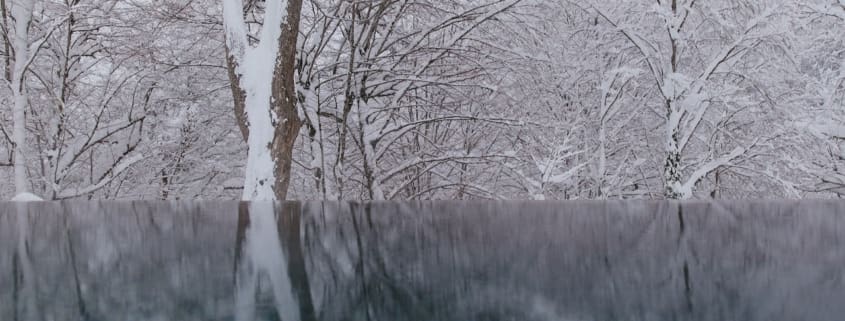How to Winterize Your Pool
Pools are fantastic during the hotter months of the year. There’s nothing quite like having the option to jump in for a refreshing swim whenever you like. Most people don’t use their pools once the weather turns cold, though. If you’re one of them, you need to know how to winterize your pool.
Cleaning and Chemistry
Cleaning is the first step in winterizing your pool. Start by removing and cleaning pool accessories like skimmer baskets, steps, ladders, cleaners, and solar blankets. Let them dry completely before storing them for the winter. Next, deep clean your pool. Clean the surface using a skim net before vacuuming to remove any debris on the bottom. Then, thoroughly brush the bottom and sides of your pool.
Measure pool water chemistry a week before you close your pool. The water should have an alkalinity between 80-150 ppm, a pH between 7.2-7.6, a calcium hardness level between 175-225 ppm, and a chlorine level between 1-3 ppm. Make any necessary adjustments based on the results of your measurements. Levels on the higher end of the range are usually better since they tend to drop over time.
Water Levels and Equipment
Does the water ever freeze on your property? If so–and if you don’t intend to use a skimmer cover–lower the water level in your pool before you close it. How far you should lower it depends on what sort of cover you intend to use. Lower it half a foot below the skimmer if you use a solid cover. For those using a mesh cover, the water should be a foot below the skimmer.
Pools have lots of equipment and water runs through pretty much every part of it. That water needs to be drained completely to prevent damage from being done due to water freezing and expanding in the equipment and piping. Use a blower to clear the water from the lines before plugging them using expansion plugs. Adding pool antifreeze can add some extra protection against burst pipes. Drain, remove, and clean each filter and pump before storing them indoors.
Shock and Algaecide
Before you cover the pool for the winter–and the last step in the winterizing process–add some pool shock and algaecide to the water. This will help prevent bacteria and algae growth. You’ll be glad you did when it’s time to reopen your pool, as it makes getting it ready for use much easier. Pay close attention to the instructions for each substance and evenly distribute them around your pool. This may need to be done a few days before covering the pool, depending on the shock you use.
Winterizing your pool is an important part of making sure it stays in good condition during the winter months when it’s not in use. Once the weather is consistently below 65 degrees, it’s time to start the winterizing process. Plan to spend about a week winterizing your pool. Learn how to do the process properly so you have an easier time of it when it’s time to open your pool again when the weather warms up.
Did you know that you can enjoy a hot tub all year long? Click here to discover the hot tubs available from Sonoma Backyard today!




